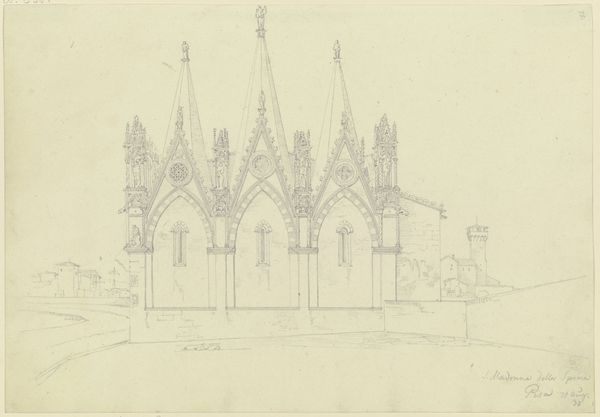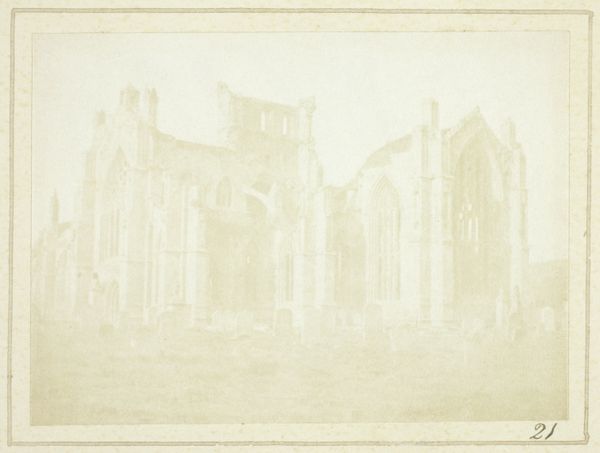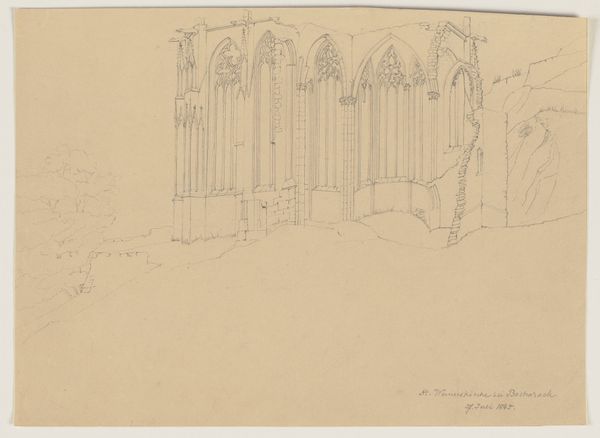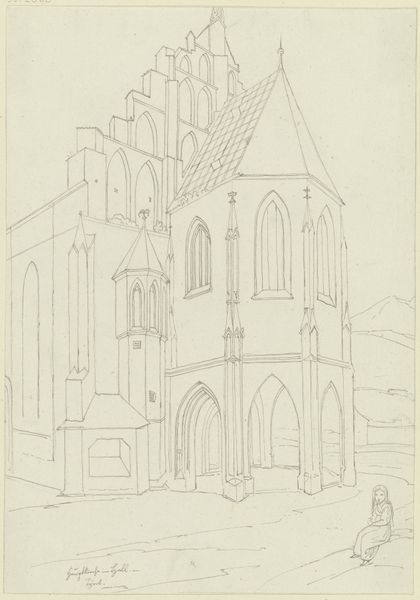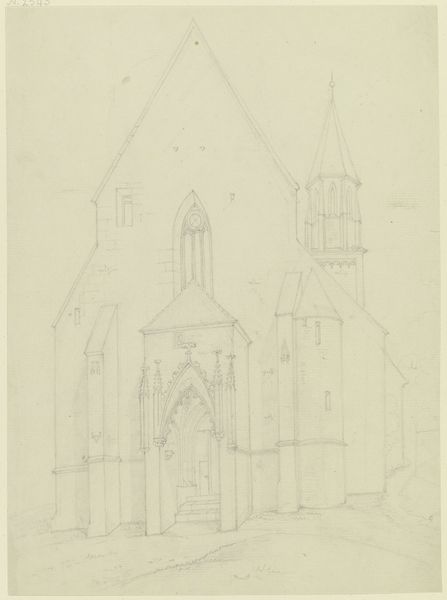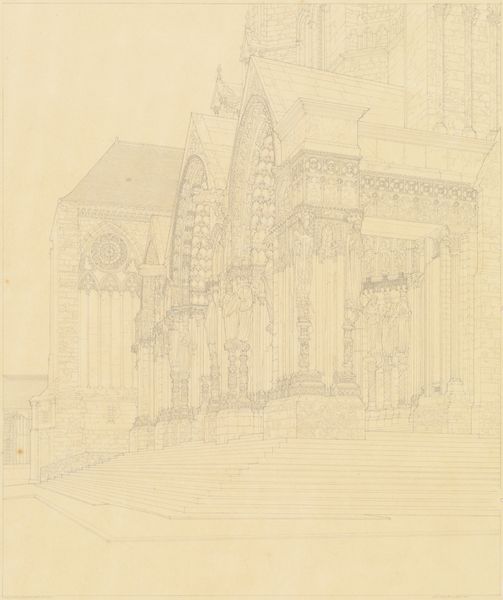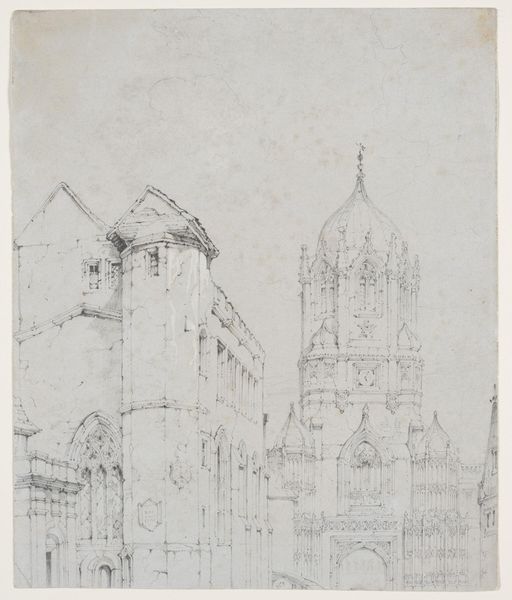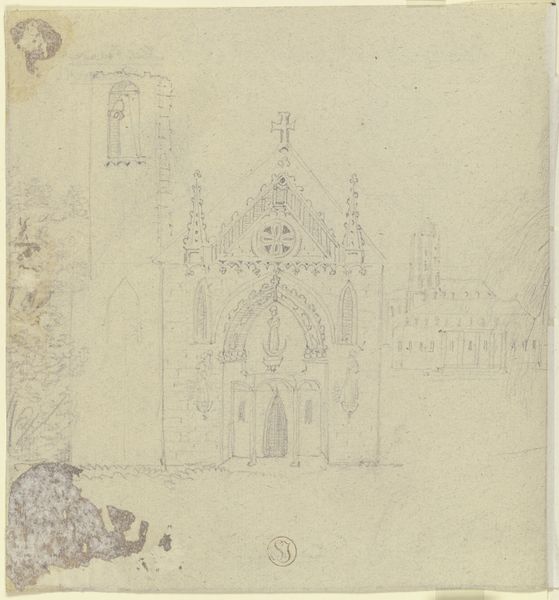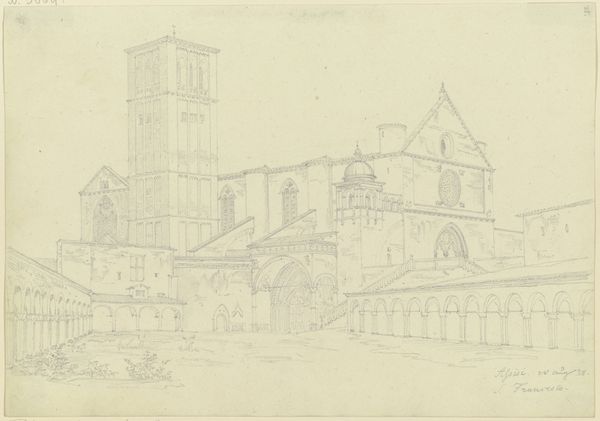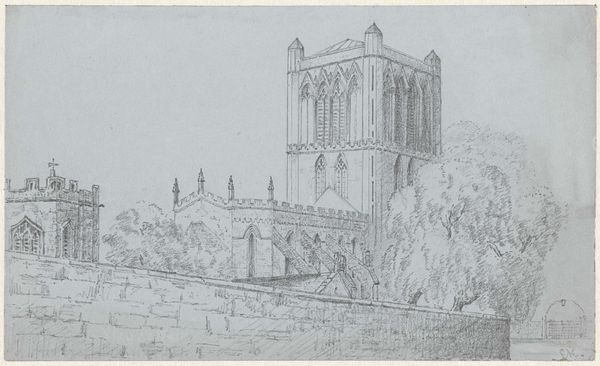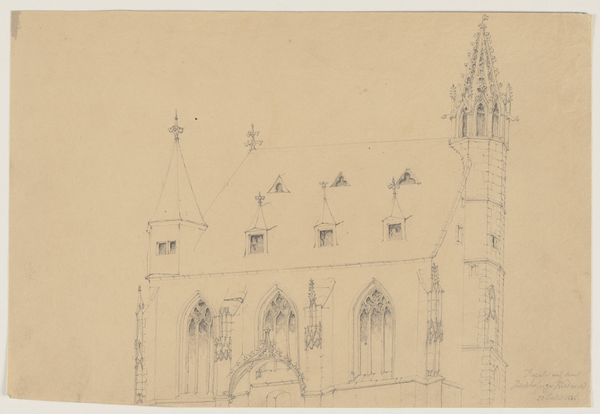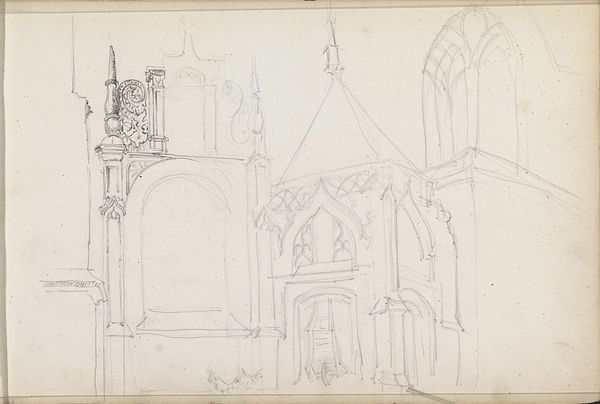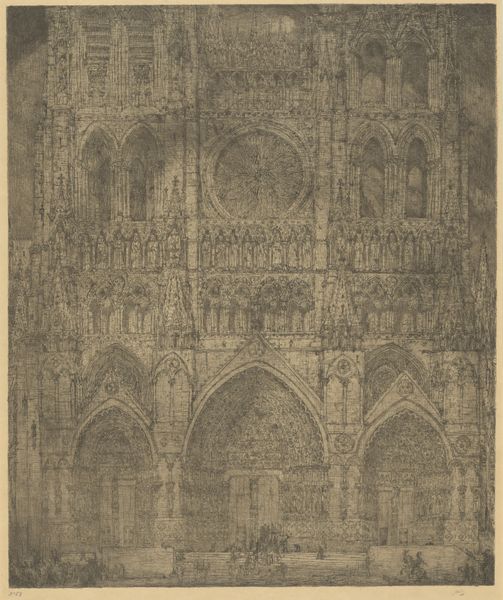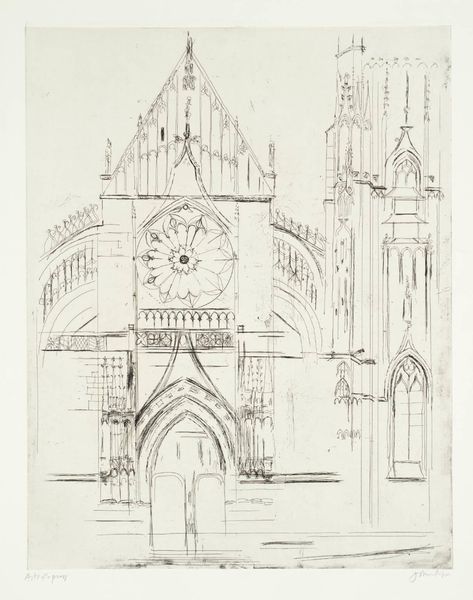
Copyright: Public Domain
Curator: Here we have Friedrich Maximilian Hessemer's "Santa Croce in Florence," created as an etching, dating from 1827. Editor: It feels hushed, almost a memory. The lines are so delicate, barely there. A ghost of a building, shimmering into being. Curator: Indeed. Note the linear precision characteristic of etchings at the time. Hessemer employs line work meticulously to represent the scale and mass of the architecture. It's less about romanticising Florence and more about documenting it, using a reproducible method. Editor: But there’s a softness, despite the precision. It's not just a technical drawing. It makes you want to run your fingers along those stones. Curator: That speaks to the layering process itself. Consider the multiple passes of the etching needle and the immersion of the plate in acid. This act is very process oriented. Editor: All that work...yet it seems so effortless. You feel the weight, the history of Santa Croce. Did Hessemer experience something in Florence he translated in his image? Curator: Hard to say for certain. But remember, travel became more accessible during the 19th century, fostering interest in and demand for images of architecture and landscape, and etching was a cheap way to make them. The marketplace was demanding a specific type of souvenir. Editor: Still, even with the forces of the market in play, an artist can't help but infuse some part of their experience, don't you think? The very choice of this angle, that light... It feels deeply personal, rather than just commercial. Curator: The fact it exists as an etching, that's something any buyer of any budget could potentially acquire. That accessibility is interesting from a materialist point of view, because it suggests the architecture of Santa Croce wasn't reserved for elite viewership only. Editor: Maybe. But, personally, I’ll take my cue from the light, from how Santa Croce almost vibrates on the page... It invites introspection. Curator: Well, this piece certainly offers us a perspective into 19th-century modes of artistic production. Editor: And a glimpse of beauty rendered in delicate lines, whatever the circumstances.
Comments
No comments
Be the first to comment and join the conversation on the ultimate creative platform.
